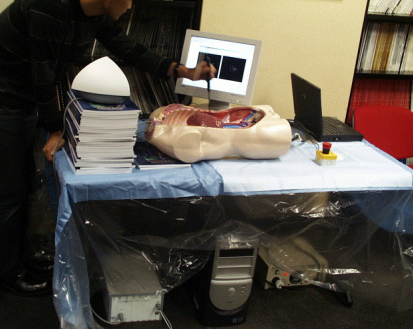COMPUTER ASSISTED INTERVENTIONS & MEDICAL ROBOTICS
RESEARCH AT GEORGETOWN UNIVERSITY MEDICAL CENTER
Tuesday 04 Nov. 2003, 11-12, (MI 02.13.010)
invited talk by:
Kevin Cleary, PhD
Imaging Science and Information Systems (ISIS) Center
Department of Radiology
Georgetown University Medical Center
Washington, DC
A research program in computer assisted interventions and medical robotics
at Georgetown University will be presented. This is a U.S. Army funded
project to develop physician-assist systems for precision placement and
manipulation of medical instruments during minimally invasive procedures.
Physician-assist systems can incorporate three-dimensional visualization,
mechanical systems such as robots, and optical and magnetic localization
systems. An overview of two current projects will be given:
- medical robotics for precision placement of needles in spinal procedures
- magnetic field sensor based localization of instruments for internal organ motion in liver interventions
In the medical robotics arena, we have recently received FDA approval to use a small "needle driver" robot for placement of a 22-gauge needle for nerve and facet blocks in the spine. The needle driver robot was designed and built at Johns Hopkins Urology Robotics (URobotics) Laboratory, where it has been applied to percutaneous nephrostomy. The robot is controlled by the physician through a joystick and a touch screen interface. Cadaver studies and an initial clinical trial have been completed and these results will be presented.
For tracking internal organ motion, we have been developing a novel image-guided surgery system based on magnetic field sensor localization. The AURORA®(Northern Digital, Waterloo, Canada) is a magnetic field based positioning sensor system that is capable of tracking tiny sensor coils (0.9 mm in diameter and 8 mm in length). These coils can be embedded in needles, catheters, and other instruments to enable us to track internal organs. To test this concept, we have built a liver respiratory motion simulator. Initial experimental results using this simulator will be presented.
 |
 |
||
|
|
